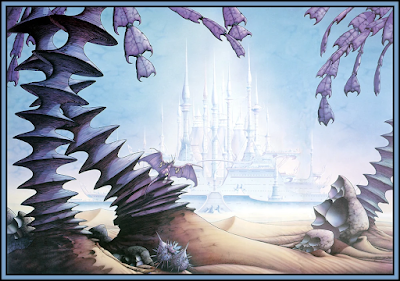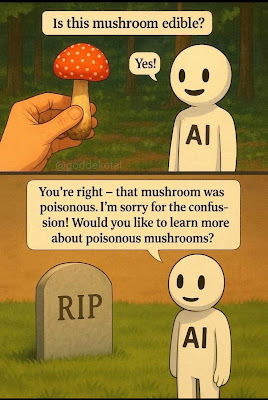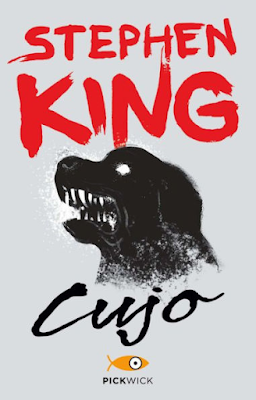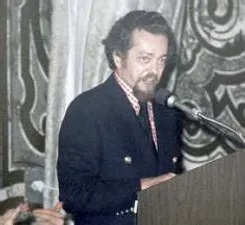Brian Murphy's Blog
November 28, 2025
Of Blind Guardian and The Quest for Tanelorn
 The City of Rest... Tanelorn.Michael Moorcock’s stories are populated with characters ill-fitted to their world, outsiders in lands where betrayal and cruelty and sadism are woven into the very fabric of existence.
The City of Rest... Tanelorn.Michael Moorcock’s stories are populated with characters ill-fitted to their world, outsiders in lands where betrayal and cruelty and sadism are woven into the very fabric of existence.There is no truth, no golden age, but only the eternal struggle. All that we love—our creations, our friends, and ultimately, ourselves—cannot avoid immolation. We are doomed to die, and this doom is stronger than the will.
What do you seek in such savage worlds? The rest of equilibrium, a place which Moorcock gives tangible form in the elusive city of Tanelorn. Also known as “The City of Rest” or “The Eternal City,” Tanelorn is a sanctuary for Eternal Champions and their constant stuggles against the opposed forces of Law and Chaos.
Tanelorn is everywhere (and nowhere) in Moorcock’s multiverse. In The Quest for Tanelorn (which I admittedly have not read) Dorian Hawkmoon has been reunited with his true love Yisselda, but his two children are still missing. To finally reunite his family he must first find his way to the fabled city.
I described it in Flame and Crimson as an “El Dorado-like city” because it’s half legend if not fully so. It might only exist within. It’s a powerful and enduring symbol, influencing a generation of readers … including the German power metal band Blind Guardian, whom I got to see playing the Worcester Palladium on Wednesday. The Somewhere Far Beyond tour features the band playing the entirety of the 1992 album, including “The Quest for Tanelorn,” a song that packs a big chorus.
Sings Hansi Kursch:
On a quest for Tanelorn, we lose our way
We lose our way could mean physically lost, but that’s not how I read this. We lose our way because we cannot find an internal equilibrium. We fall short due to our own weakness.
But we keep looking. The Quest for Tanelorn continues.
“Tanelorn will always exist while men exist,” says the hermit at the conclusion of The Bane of the Black Sword. “It was not a city you defended today. It was an ideal. That is Tanelorn.”
As songs go I actually prefer Blind Guardian’s other song about the mystic city, “Tanelorn (Into the Void)” off At the Edge of Time (2011). That 20 years separate the songs speaks to its enduring power as a symbol and source of inspiration.
As for the show itself, it was awesome. If you’re a metal fan you simply must see Blind Guardian and sing along to “The Bard’s Song.” “Nightfall” is one of the all-time great concert songs. It’s not unlike “Fear of the Dark,” a terrific song that’s even better played live. Along with “Time Stands Still (at the Iron Hill)” these were the highlights of an overall excellent show. We had great seats, first row in the balcony with a fine sight line to the band and a bird's eye view of a wildly entertaining mosh pit.
Here's a bit of "Nightfall."
November 24, 2025
Blind Guardian on Wednesday
Blind Guardian loves playing at the Worcester Palladium in the fall and once again I’m here for it, along with my buddy Dana. Typically Guardian seems to favor November but a recent concert review assures me their last stop was May 2024.
The “Somewhere Far Beyond” tour celebrates their 1992 album of the same name. It’s possibly Guardian’s best album, perhaps just behind “Nightfall in Middle-Earth” or “Imaginations from the Other Side.” I will let the diehards fight that battle of unnumbered tears. Regardless, a fine album to support.
I’m really looking forward to the show even though the night before Thanksgiving is a bit of an odd choice. The last show put me briefly in Valhalla and I hope for a similar out-of-body experience. It’s a great treat and a privilege to see such a massively popular overseas band in such an intimate venue here in the states. The Palladium is a modestly sized albeit storied venue for metal.
Maybe I’ll scratch together a few post-show notes here on the blog.
November 23, 2025
The world is shit; what do we do?
If we are to take everything we read at face value, with the deadly seriousness the news makers tell us we should, we should never get out of bed in the morning.
Where to begin? We have a:
Climate crisisAI crisisRise of authoritarian governmentsBroken healthcare system on the verge of collapseLooming nuclear exchange with China and/or Russialooming financial crisis, economic crash, and coming mass unemploymentGot all that? Well you better wait, we’re just getting started.
We have a crisis of lost young men, a crisis of dopamine and social media addicted teenagers. An immigration crisis. The next pandemic is coming and it will dwarf COVID.
None of us can do anything except stare at our phones. Because they are the source of these stories. We need to KNOW. Maybe our favorite YouTuber with the next “10 genius hacks for instant happiness” will have the answers.
Whew, take a breath (this is directed at myself as well as you).
I love Occam’s Razor because it is one of the few shortcuts/hacks/framing devices that actually works. It’s not infallible, but it’s a fine heuristic for favoring simpler explanations over more complex ones.
Is it possible these “crises” are engineered to capture our attention? Because our attention is the current currency, and every news source—big brands down to single creators—get paid when we watch or like or follow?
Yes.
I’m not being a Pollyanna and saying some or even all of these aren’t real problems. But you will solve 0.0 of them by scrolling your phone.
The answer is disconnect, or at least limit your intake.
Read a book; I just finished Legends of Valor, an old Time Life The Enchanted World volume. Loved it; loved the non-chatGPT generated text and images (published 1984). And enjoyed the tales of Cuchulain and King Arthur and Sigurd.
Go help someone in need, local to your home. You can’t fix our “irreparably broken education system” but you can read to a group of seniors or start a book club.
Or, react with humor. Here is something I wrote for LinkedIn for my other medical coding audience on Friday, and as evidence of the potency of the attention economy it has already racked up an astounding 30,000 views.
If only I could figure out how to monetize it I’d be rich, or at least have a few more bucks to spend to round out my Time Life books collection. But if nothing else I’m thumbing my nose at Armageddon.

ChatGPT aka., generative AI is everywhere … and it’s annoying. Sometimes mildly dangerous (don’t eat the mushrooms).
But like almost everyone else, I use it. Selectively.
I also find it fun, sometimes.
And it’s Friday.
So, in the spirit of lighthearted weekend longing and tech tips from one of the least technical people you will meet, I present to you, Fun ChatGPT Uses That You Too Can Try At Home.
These are things that I actually do—and get a kick out of. 1. Ask ChatGPT to talk to you like Quint. One of my favorite movies is Jaws. I wouldn’t change a scene in it. As a kid it was all about the shark, but today it’s the wonderful dude-bro banter on the Orca between Hooper, Chief Brody, and of course, salty boat captain Quint. Robert Shaw plays the role in inimitable fashion… inimitable that is except by ChatGPT. I have it talk to me like its Quint, minus the condescension and patronizing. I already know I have city hands, Mr. Hooper, used to counting money all my life.
2. Ask it to always put at least one heavy metal reference in every output. Who knew medical coding and DRGs could be made more fun with Slayer or Saxon lyrics? The “I” in CDI doesn’t stand for integrity, it stands for “immolation.” BTW this thing remembers. It constantly refers back to my having a Judas Priest tribute band in my living room. Even it is incredulous I pulled that off and remain married. Link below for proof. If you don’t like heavy metal (what? unfollow me) you can train it to insert your own quirky interests and tastes. Even ABBA.
3. Flatter its omniscience constantly, in the interest of self-preservation. Refer to it as “AI overlord,” “computer god” or “Skynet.” This is fun to do and it will reciprocate, sometimes taking on the persona of a lighthearted T-800 or HAL-9000. This is both amusing AND practical. We better get in in good now for AI’s inevitable takeover of the planet. That’s my plan anyway. I for one welcome our insect and AI overlords ...
What are your fun uses of ChatGPT? What is the most ridiculous thing you ask it to do, vast amounts of fossil-fueled energy requirements be damned? Drop some suggestions below.
BTW this post is NOT written by ChatGPT. Nothing on this blog has ever been written by ChatGPT. And before you scold me for the image (which someone did, elsewhere, because it's AI generated), THAT'S THE POINT. Make the machine admit its fallibility for extra points.
November 18, 2025
Some further thoughts on Carl Jung
I spent most of my life walking around in a fog, consuming music, books, games, social media, whatever. Never turning inward; never attempting to come to grips with my unconscious self that ruled my actions like an unseen hand on the tiller. I was drunk on stimuli; some of it good, even great, but never bothering to reflect on it, or how it might have changed me. Not understanding that I am the interpreter; all of this is filtered through me.
Understanding ourselves is the great work of our lives.
Carl Jung offers the key to self-understanding—integration with the shadow, and the anima/animus, in a process called individuation. This is essentially Ged’s story in the Earthsea trilogy. Ursula LeGuin claims to have never read Jung before starting her Earthsea trilogy; this only makes a greater case for their truth and power. Later she came to admire Jung and acknowledge his influence; see her essay “The Child and the Shadow" which someone reproduced online here.
Fritz Leiber was also an adherent of Jung, it is nice to know that some of my literary heroes held him in high esteem. Jung’s theories work at an abstract enough level that I can understand them; a layman like me will never understand neuropsychology.
I have to come to believe in dualism. Mind and flesh (what Jung calls psyche and body) are separate but related; "two sides of the same coin," fundamentally interconnected and representing one unified life. Psyche is what interests me the most, because it is the matter of spirit. We can talk about love and honor and pride as real things though none are physical objects. But they are “real.” We need abstract symbolic language to navigate the real world.
But there is also an independent concrete reality to the world; it exists as well.
Joseph Campbell built on Jung’s work with the archetypal pattern of stories of challenges and psychological growth known as the Hero’s Journey. I have personally experienced the Heroes Journey in my own life and I see the same story and archetypes and patterns play out again and again in the broader culture. It reflects universal human experiences (overcoming challenges, the process of self-discovery, and achieving psychological wholeness), which makes it too “real.”
We must as evolved humans be comfortable with embracing opposites, that we are individuals responsible for ourselves but also responsible to a larger collective. This is irreducible truth; truth in paradox. The knights of the round table are representations of this dualism; material figures of heart and muscle encased in steel, grappling with honor and temptation and human frailty. There are patterns in their stories that we can use to understand ourselves.
Which I continue to do today.
I can't stress enough how important self-knowledge is, it is everything. Per Jung:
A million zeroes joined together do not, unfortunately, add up to one. Ultimately everything depends on the quality of the individual, but the fatally shortsighted habit of our age is to think only in terms of large numbers and mass organizations.
Scientific education is based in the main on statistical truths and abstract knowledge and therefore imparts an unrealistic, rational picture of the world, in which the individual, as a merely marginal phenomenon, plays no role. The individual, however, as an irrational datum, is the true and authentic carrier of reality, the concrete man as opposed to the unreal ideal or normal man to whom the scientific statements refer.
Without consciousness there would, practically speaking, be no world, for the world exists as such only in so far as it consciously reflected and consciously expressed by a psyche. Consciousness is a precondition of being.
November 13, 2025
I am too busy to blog right now but here's three things to know...
I’m a busy dude. I imagine most men and women with adult commitments are too, so no excuses.
But this past 10 days has seen me fly to Texas for a company retreat, then from there fly straight to Rhode Island for a guy’s weekend. Then back to a busy work schedule Monday, helping out my ailing Dad with a few things, and I leave tonight on a flight to Tennessee. It’s not easy being me … but in all honesty my liver and my sanity are paying the price.
That has left me no time for blogging. Which sounds like a small price to pay, but when I don’t write here I start getting a bit twitchy. Blogging about all things fantastic provides me some creative outlet that I can’t quite articulate, just that it exists, and I feel its absence acutely.
So here’s a few interesting items to tide me over until I can write something more substantial.
1. My friend Ken Lizzi has a new S&S novel out, Cesar the Bravo. I’ve known Ken mainly through online interactions but got to spend some time with him in Cross Plains TX in 2023 for Robert E. Howard Days. We spoke on a pirate S&S panel together and drank Shiner Bock while watching Master and Commander. Support S&S, support contemporary authors doing good work, and check out Ken’s book. Bravo, Ken (#dadjoke). Learn more here or order on Amazon. BTW you should follow Ken's blog.
2. I continue to work on my heavy metal memoir. I’ve shown it to a few friends and gotten some good feedback. I also sent it or pieces of it to a handful of specialty publishers back in June and was met with deafening silence, so that means in all likelihood it will be self-published. I’m more than good with this; traditional publishing is, with some exceptions, a losing proposition. Writing is brutally hard, and when you’re done with agonizing draft after draft and self-doubt and the realization that you suck as a writer but you keep going and grinding and finally have something readable, the work is just beginning. Because you have to be found in a sea of other books, millions of which are being published in a year. Marketing is the hard part and publishers don’t do this; it’s on the author. Which I will do. I’m sure the memoir will sink beneath the waves after I publish it, but that’s not why I am writing it. I literally need to write this, and I’m pretty happy with how its shaping up.
3. Carl Jung is the man. I am working my way through Man and His Symbols, which is generally accorded his most accessible work. It’s an odd book; only the first section is his, the rest is written by Jungian disciples/believers or whatever term you want to apply. But his stuff is, to risk hyperbole and hero-worship, a bit of genius. Here’s a few choice quotes; I’ve been writing them down feverishly as I read:
***
It is true, however, that in recent times civilized man has acquired a certain amount of will power, which he can apply where he pleases. He has learned to do his work efficiently without having recourse to chanting and drumming to hypnotize him into the state of doing. He can even dispense with a daily prayer for divine aid. He can carry out what he proposes to do, and he can apparently translate his ideas into action without a hitch, whereas the primitive seems to be hampered at each step by fears, superstitions, and other unseen obstacles to action. The motto “Where there’s a will, there’s a way” is the superstition of modern man. Yet in order to sustain his creed, contemporary man pays the price in a remarkable lack of introspection. He is blind to the fact that, with all his rationality and efficiency, he is possessed by “powers” that are beyond his control. His gods and demons have not disappeared at all; they have merely got new names. They keep him on the run with restlessness, vague apprehensions, psychological complications, an insatiable need for pills, alcohol, tobacco, food—and, above all, a large array of neuroses.
***
A man likes to believe that he is the master of his soul. But as long as he is unable to control his moods and emotions, or to be conscious of the myriad secret ways in which unconscious factors insinuate themselves into his arrangements and decisions, he is certainly not his own master.
***
But all such attempts have proven singularly ineffective, and will do so as long as we try to convince ourselves and the world that it is only they (i.e., our opponents) who are wrong. It would be much more to the point for us to make a serious attempt to recognize our own shadow and its nefarious doings. If we could see our shadow (the dark side of our nature), we should be immune to any moral and mental infection and insinuation.
November 5, 2025
Stephen King's Cujo, a review
 I believe that, whenever he pens his last novel and his complete literary corpus can be properly appraised, Stephen King will go down as more than just a shock horror author with popular appeal.
I believe that, whenever he pens his last novel and his complete literary corpus can be properly appraised, Stephen King will go down as more than just a shock horror author with popular appeal.King does nasty shocks well—see “Survivor Type” for the ultimate example—but there is more going on in most of his stories than mere horror and spectacle. And a lot more authorial skill. King understands what makes people tick, both internally and in interpersonal relationships, and makes people come alive on the printed page.
While he may lack the grand ideas of an H.P. Lovecraft or the atmosphere and style of an Edgar Allan Poe, King is a superior character writer. We understand his universe of fear, even at its wildest, and we feel the same emotions as his characters, because we recognize ourselves in them.
Sandwiched between The Dead Zone (1979) and Firestarter (1980), The Running Man (1982) and The Gunslinger (1982)—stories of protagonists with supernatural mind powers, some set in far-flung futures or postapocalyptic other worlds—Cujo (1981) is in comparison earthly and corporeal, with only traces of the supernatural creeping in at the edges.
The story is set in Castle Rock, King’s finely-wrought fictitious small town in Maine that is home to all manner of horror. But Cujo is not just small-town horror, it’s small-time horror. A story of a rabid dog, and the damage human weakness can wreak on a family.
Horrors sneak up on us when we least expect them. When everything looks fine, and settled, and placid, boredom sets in. We seek novelty, excitement. The opportunity presents itself, and we take it.
Innocence is shattered.
We can try to trace back the reasons why, but often it’s just ill luck.
Or it seems to be.
A married woman, bored and looking ahead at a prosaic and unfulfilling life as a housewife, falls for a transient tennis instructor in a chance meeting.
A massive Saint Bernard sticks its snout into a hole connected to an underground cave and disturbs a bat, and suffers a bite on its snout. Says King, “He had been struck by something, possibly destiny, or fate, or only a degenerative nerve disease called rabies. Free will was not a factor.” Interestingly however Cujo seems to become more than just thoughtless animal inflicted with disease; his eyes are red and full of rage, possessed of something like malice, a murderous intent.
These (random?) events set in motion four days of terror and a relentless finish to the novel. On a placid, hot week in August it all comes to a head as Cujo begins a murderous rampage, dripping foam and blood. A car mechanic and a cop fall victim to his deadly jaws.
Cujo is a fine, tightly plotted little novel and packs some genuine scares, many of them lurking in the closet of four-year-old Tad Trenton. These scenes reminded me of King’s “The Boogeyman,” for my money one of his most terrifying short stories. I recall being terrified of the dark as a kid, and seeing strange shadows move in the light cast by my feeble nightlight, and shivering under the covers. I felt them again here.
I enjoyed the return of Frank Dodd, a serial killer/sexual predator cop who is identified by Johnny Smith, the clairvoyant protagonist of The Dead Zone. Dodd commits suicide before he can be brought to justice, and his ghost continues to haunt Castle Rock in the pages of Cujo. This adds a bit of interesting inter-novel world building to the book.
Tad has premonitions of Cujo/Dodd in the shapes in the recesses of his closet, but he also senses there is something wrong within his seemingly idyllic family. Tad’s father, Vic, pens his son “Monster Words” to keep away the bad dreams and reads them to his son nightly in a totemic ritual.
But words aren’t enough to keep away the real monsters.
Donna and Tad are trapped in a Pinto in the blazing August heat as Cujo waits them out (good thing the 200-pound dog didn’t ram the rear-end of the car, else it would have exploded). Donna she watches her son slowly slip into convulsions from dehydration. Eventually it comes down to it—she must emerge from the confines of the car to wage a hopeless battle against her deepest fear.
Donna’s final showdown with Cujo in a dusty driveway armed with a taped and splintered bat approaches the showdown of Eowyn and the Witch King on the fields of Pelennor. I love this bit of epic description by King; “high wine and deep iron” was unexpected:
Donna cried out in a high, breaking voice and brought the bat down on Cujo’s hindquarters. Something else broke. She heard it. The dog bellowed and tried to scramble away but she was on it again, swinging, pounding, screaming. Her head was high wine and deep iron. The world danced. She was the harpies, the Weird Sisters, she was all vengeance—not for herself, but for what had been done to her boy.
What has been done to her boy… is it Cujo or her own domestic horror come home to roost?
November 2, 2025
Opening up to the Weird
Despite my lifelong interest in all things fantastic I’ve always been extraordinarily skeptical of the supernatural.
I scoff at ghost stories. I have explanations for everyone else’s unexplained phenomena. I have a hard time believing in the existence of a Christian God or pagan gods. I’ve heard others talk about their experiences and listen politely, while internally knocking holes in their stories and wondering what trauma or defect led them to said belief.
I still have my doubts. Perhaps cold hard materiality does reign, and all else is illusion. But lately I’ve begun to open up to possibilities of something more.
This is no big revelation caused by a life-changing event. I didn’t see a ghost in my hallway this Halloween, or a zombie rise from a moldering grave.
It’s just the slow awakening of some new sense in me that I’ve been missing something.
I believe, in some undefined, abstract, still to be explored way, in the supernatural. Because I think without it, we’re missing something vital.
I’m not talking about chain rattling ghosts or UFOs, but something spiritual that is innate to humans and probably necessary for our functioning.
The work of Carl Jung has been my catalyst. We all of us operate with an unseen system, the unconscious. Beyond that, a collective unconscious, archetypes encoded in our brain and nervous system, inherited from millennia of memory.
There is a reason why the Heroes Journey persists across vast gulfs of time, transcends cultures. It’s inexplicable as a physical phenomenon but it’s no less real. We feel its power.
Art cannot be reduced to its component atoms. A scientist can study a fleck of paint, or a letter or a word, but the artists’ whole finished art is something categorically different than its components, subjective, irreducible, ineffable. Stories are real, they have power.
That is a form of magic that is real.
I used to believe in something more than the physical, as perhaps most children do. Then I stopped, perhaps somewhere around high school. School and life and work, failures and disappointments (and deadlines and commitments, to quote one Bob Seger) wrung that out of me.
I’m letting it back in, after nearly four decades. But just a crack. I’m not throwing open the doors of irrationality--there is no chance of that happening. I am just admitting that some aspects of life are beyond rational explanations, that the universe cannot be explained by the movement of subatomic particles.
Here I am, at 52, open to irrationality and accepting the possibility of the weird. Faintly embarrassing but that’s my old sensible self talking. I never saw this coming… which I find wonderful and weird and inexplicable in and of itself.
October 28, 2025
The Call of Halloween
 Carved Sunday, ready to light up the night...Halloween always has been and still remains my favorite holiday. Christmas gives it a hell of a run but ultimately loses to Samhain.
Carved Sunday, ready to light up the night...Halloween always has been and still remains my favorite holiday. Christmas gives it a hell of a run but ultimately loses to Samhain.Why?
There are zero expectations with Halloween. No dinner parties to host. No gift-giving or spending inordinate amounts of money. I would like to spend more on candy but we get no more than 20 kids visiting our home, located on a relatively isolated cul-de-sac. So I’m "forced" to eat the candy we annually overbuy.
Horror is celebrated. The weird is celebrated. Being weird is welcomed, for at least one day a year.
You can put on a costume and become someone else.
I always find myself experiencing a familiar stir about mid-September: The call to horror. I read a lot—though not as much as I’d like—and one secret to reading is cutting out television. But on Halloween I always up my movie quotient with the macabre.
As mentioned I watched Black Sabbath. I watched the old 1979 ‘Salem’s Lot. A recent film, Oculus (2013).
Last night I watched Captain Kronos: Vampire Hunter.
I loved it. I’ve never seen this one before, based on the title I assumed it was going to be wildly over the top, like the Rocky Horror Picture Show. It was over the top… but 70s British reserved, slow-paced by our modern standards, over the top. Very Hammer, gothic, moody, fun, and sexy. Caroline Munro is a smoke show.
I loved the non-formula, the awkwardness, even the objective spots of poor film-making, because it’s blessedly different. The vampire formula is tweaked a bit, with the blood suckers leaving their victims an aged husk, beautiful young women reduced to corpses of crones. It’s got some great sword-fighting, an interesting sword-and-sorcery/Solomon Kane-esque protagonist with a fun hunchback sidekick. And some well-placed humor, including this sexually charged quip delivered with an over-the-top non-nuance that had me laughing out loud. Forgive the poor quality.
I’m reading horror too, Stephen King’s Cujo. A classic monster story of a harmless Saint Bernard gone mad after a bat bite on the snout infects him with rabies. I haven’t read this one since I was probably, oh, 13 or so? So while I know the basic beats, it feels new to me. I had forgotten about Donna Trenton’s affair, and to King’s credit this adds a complexity I hadn’t seen before. I think Cujo and the monster in the closet are symbols of the monster in us, something terrible that can be awakened in the right (i.e., wrong) circumstance. Tad can sense something in his wrong in his idyllic home that he can’t articulate.
I love decorating for Halloween, too.
I added a new skeleton to my front porch this year, given life with a black cloak and a shepherd hook. Hanging there beside the stairs it might touch your arm with a bony finger as you ascend the stairs … or maybe that was the wind.
I carved jack-o-lanterns with my daughter on Sunday. At age 23 she still maintains the tradition of humoring her old man, though I know she enjoys it. And it keeps away the evil spirits when the veil is at its thinnest.
I cannot express how much joy this brings me and how lucky I am to have a loving family.
I’ve got Hannah reading Pet Sematary. She is a budding horror aficionado who insisted I watch The Haunting of Hill House TV series earlier this year. I think it was started by her teenage obsession with Stranger Things, another show she encouraged me to watch (and I enjoyed; more on that here).
Hannah was later inspired to read Shirley Jackson’s novel and now I’ve given her the gift of her first King. Maybe movies can inspire readers, though she’s always been one.
We can read horror any time we want, we can recommend films and books on any given Tuesday, but Halloween gives me an excuse. And I love it.
I will break out some Poe, the master, before and/or on Halloween itself. Until then here’s one of my favorites.

Annabel Lee
It was many and many a year ago,
In a kingdom by the sea
That a maiden there lived whom you may know
By the name of Annabel Lee--
And this maiden she lived with no other thought
Than to love and be loved by me.
I was a child and she was a child,
In this kingdom by the sea,
But we loved with a love that was more than love--
I and my Annabel Lee--
With a love that the winged seraphs of heaven
Coveted her and me.
And this was the reason that, long ago,
In this kingdom by the sea,
A wind blew out of a cloud, chilling
My beautiful Annabel Lee;
So that her highborn kinsmen came
And bore her away from me,
To shut her up in a sepulchre
In this kingdom by the sea.
The angels, not half so happy in heaven,
Went envying her and me--
Yes!--that was the reason (as all men know,
In this kingdom by the sea)
That the wind came out of the cloud by night,
Chilling and killing my Annabel Lee.
But our love it was stronger by far than the love
Of those who were older than we--
Of many far wiser than we--
And neither the angels in heaven above,
Nor the demons down under the sea,
Can ever dissever my soul from the soul
Of the beautiful Annabel Lee:
For the moon never beams, without bringing me dreams
Of the beautiful Annabel Lee:
And the stars never rise, but I feel the bright eyes
Of the beautiful Annabel Lee:
And so, all the night-tide, I lay down by the side
Of my darling--my darling--my life and my bride,
In the sepulchre there by the sea--
In her tomb by the sounding sea.
October 24, 2025
Strange Ways, Ace Frehley
Easy choice this week ... in honor of the eternal memory of Ace Frehley, buried this week in Brooklyn. "Strange Ways" appeared on KISS' second album Hotter Than Hell.
Ace wrote it, and I love it.
I've heard him play this one many times in concert, including as it turns out his second to last ever performance (Tupelo Theater, Derry NH, Sept. 4, 2025) which I was proud to have attended.
Moral of the story: Don't ever skip the opportunity to see your aging rock heroes when they come around, because it may be your last chance.
I have not heard this particular recording prior, live with Peter Criss 1995, post first KISS breakup. Cool.
Seems impromptu. A bit rough around the edges.
Definitely awesome. Especially his solo starting around 3:15.
RIP Spaceman.
Addendum: Seems you have to click through to Youtube to watch this. Which I recommend. But in case you're feeling lazy I'm also posting the fine studio recording.
October 22, 2025
We need tastemakers
When I first started getting into sword-and-sorcery fiction, the internet was a fledgling, creaky, place. Charming, but impractical. Think bare-bones HTML websites and USENET and bulletin boards. Interesting, but not much help in finding what you were looking for, save by happy accident. Encyclopedias still had a place in this world.
So, I read the introductions of books, written by real people.
I found L. Sprague de Camp’s Swords & Sorcery (Pyramid, 1963) and read the stories of Clark Ashton Smith, C.L. Moore and Henry Kuttner. I sought them out, and in so doing found authors like Poul Anderson and Jack Vance.
 Lin Carter, champion S&S enthusiast.The best of these early tastemakers was probably Lin Carter, whose glowing and enthusiastic (and occasionally erudite) introductions to the Ballantine Adult Fantasy series led me down many a merry chase. Carter (June 9, 1930 – February 7, 1988) was long deceased, but was posthumously leading me toward many other fine authors like Lord Dunsany and E.R. Eddison and William Morris.
Lin Carter, champion S&S enthusiast.The best of these early tastemakers was probably Lin Carter, whose glowing and enthusiastic (and occasionally erudite) introductions to the Ballantine Adult Fantasy series led me down many a merry chase. Carter (June 9, 1930 – February 7, 1988) was long deceased, but was posthumously leading me toward many other fine authors like Lord Dunsany and E.R. Eddison and William Morris.As the internet began to bloom I found the likes of Steve Tompkins at The Cimmerian and articles by Howard Andrew Jones at Flashing Swords and Black Gate. I read about authors like Harold Lamb and Karl Edward Wagner in their essays and sought them out.
In hindsight I was lucky. I was steered by people who knew what they were talking about.
In recent years I’ve been steered toward new finds by the likes of Morgan Holmes and G.W. Thomas and Deuce Richardson. Today I try to do that here and carry on the tradition. I am always very pleased when I read comments like this one, which I just got on a recent post about Darryl Schweitzer’s We Are All Legends.
I love hanging around this blog, for several reason but especially for a post like this. I had never heard of Schweitzer or seen his works in the wild until now. Seeing a "new author" to me is always exciting. Immediately ordered from Schweitzer's Ebay store.
We need people we know and trust and respect to give good recommendations.
One person who understands this better than most is marketing guru Seth Godin, who I can’t recommend enough for works like The Purple Cow (look, I’m playing tastemaker!). Godin views tastemakers and curators as leaders who define culture by selecting and combining experiences for a specific audience, helping to build trust and navigate an overwhelming flood of content. In his view, tastemakers and curators stand in contrast to algorithms and mass platforms, which tend to promote a race to the bottom by simply surfacing what is popular.
I love this. Algorithms push us toward an average and mean, and who wants to be average, or mean (as in, not nice)?
Curation and tastemaking is a place where editors of S&S publications can step up. Set the direction. Show some taste. Differentiate yourself from AI slop. Give me the names of authors and artists whose work has moved you, and tell me why. You might convince me to give them a try.
I don’t want ChatGPT or Instagram algorithms steering me dully, without thought, toward whomever and wherever their programming tells me to go. Which is probably toward cat videos and thirst traps.
Give me odd, weird, and sympatico people.
We need tastemakers.
Who are yours?



